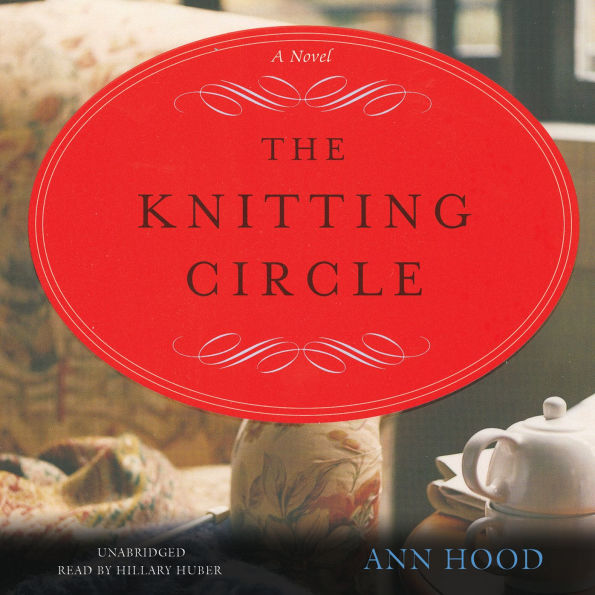Carrie Brown
The Knitting Circle was written after Hood's own tragic loss, the death of her young daughter, and it is not hard to imagine the ways in which writing this novel must have been both painful and therapeutic. It is a wondrously simple book about something complicated: the nearly unendurable process of enduring after a great loss. The novel, like knitting, seems to make itself up as it goes along, the threads bound and gathered into a whole. In the end, there is something where there once was nothing: a scarf, a pair of socks, solace where there once was pain. Little by little, by knit and by purl, Mary's empty hands are once again full.
— The Washington Post
Kirkus Reviews
The popular Rhode Island author's eighth novel (Ruby, 1998, etc.) is another domestic melodrama about loss, grief, therapeutic bonding and communal healing. The title denotes the group of female friends hesitantly joined by Providence matron Mary Baxter, following the sudden death of her five-year-old daughter Stella. Gradually forming acquaintances (if not quite friendships) with the women she encounters at "Big Alice's" Sit and Knit, Mary sleepwalks through her days, grasping the tenuous connection that binds her to husband Dylan, edging back toward her part-time job as cultural reporter for a local weekly alternative newspaper. This somewhat static narrative pattern is punctuated by terse phone conversations with her mother Mamie, an alcoholic who has always kept Mary at a distance (and who inexplicably failed to attend her granddaughter's funeral). Then we hear the knitters' personal stories in a sort of Oprah-moderated Decameron. Red-haired beauty Scarlet became involved with a married Parisian, but their affair fell victim to her carelessness. Tough-talking "glass artist" Lulu survived a violent rape. Ellen has a teenaged daughter with a failing heart-and, furthermore, left the close Appalachian community where she grew up to abscond with the charming Irishman who proved unworthy of her love. Embittered Harriet lost loved ones on 9/11, "perfect" supermom Beth suffers from cancer. And so on, through the bad days when Dylan leaves depressive Mary for another woman, until a restorative Christmas season filled with reconciliations, good cheer, completed knitting projects and all that good stuff. The impulse behind this novel is respectable (an author's note discloses that it's based onHood's own very similar experience of loss). But its overload of cliches, redundancy and exceedingly predictable sentimentality fails its good intentions. Readers can only knit their brows in consternation, and hope for a better book next time. Agent: Gail Hochman/Brandt & Hochman Literary Agents Inc.
From the Publisher
"A wondrously simple book about something complicated: the nearly unendurable process of enduring a great loss. The novel, like knitting, seems to make itself up as it goes along, the threads bound and gathered into a whole."— Carrie Brown Washington Post
"Acutely moving…The women’s tragedies unfurl like skeins of yarn rolling down a slope."— Allison Lynn People
"A heartbreaker."— Elissa Schappel Vanity Fair
"I closed The Knitting Circle feeling uplifted, even cleansed. I felt as if I were seeing with fresh eyes, ready to forgive old hurts and entertain new thoughts."— Marion Winik Newsday
"Powerful and affecting."— John Marshal Seattle Post-Intelligencer
"One can only admire Hood for the effort she takes in this book to describe an insupportable grief…Undeniably real. The lesson—that being willing to share our stories, we learn how to live—cannot be dismissed."— Julie Wittes Schlack Boston Globe
"[Hood’s] portrait of Mary’s grief is so real and so raw. The unpredictable arc of it…gives Mary’s grief a three-dimensional humanity that a less familiar portraitist might have missed…The prose of The Knitting Circle is clear, even as Mary’s perspective is clouded by heartbreak, and the pace of the story is just right."— Beth Schwartzapfel Providence Journal
"Hood’s words…pull you along, like a knitting pattern, one mesmerizing, settling click at a time, stitch by stitch, row by row, until you find yourself with something solid and real."— Peggy McMullen The Oregonian
"This book is rich in sensory detail…This book shines a light on women helping each other and the world one stitch at a time."— Jan Marin Tramontano Albany Times Union



